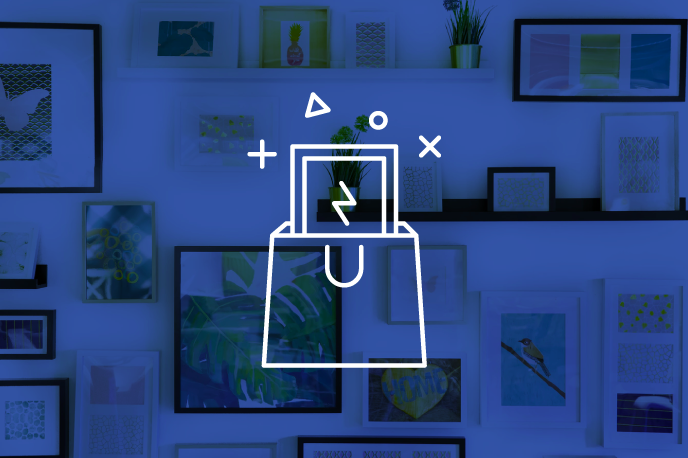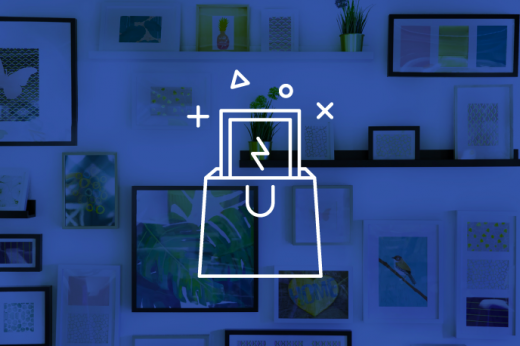Print-On-Demand: the Revolution in eCommerce
— June 11, 2018

To quote WordPress founder Matt Mullenweg, “Technology is best when it brings people together.”
That’s certainly been the case throughout the past decade.
During this time, we’ve seen an unprecedented boom in social media and publishing channels. This has brought about exciting opportunities for individuals to build powerful online brands around their most powerful and boundless commodity – themselves.
At the same time, it’s also become easier than ever to create thriving eCommerce businesses around feature-rich shopping cart solutions. Many of these are incredibly quick and simple to set up and manage.
Print-on-demand merchandise could well be the next big eCommerce revolution. Why? Because it represents the perfect meeting point between these two exciting 21st century trends.
What is Print-on-Demand?
There’s nothing particularly new about brands and individuals selling merchandise to their fans. We can trace the sale of band t-shirts and movie merchandise, for example, way back to the 1970s. It seems that any cultural phenomenon these days is accompanied by large swathes of official (and unofficial) merchandise.
The difference in print-on-demand lies in its name: items are ‘printed on demand,’ rather than in advance.
Traditionally, merchandise has been a lucrative money-spinner for businesses and artists, but it’s also been a pain in the neck, pretty much in equal measure. Product setup, minimum order quantities, logistical headaches around fulfillment and the fear of unsold stock have made merchandising a notoriously risky pursuit – leading to brands, including some of the world’s best known, willingly outsourcing the operation in exchange for comparatively small license fees.
With print-on-demand, there are none of those headaches. Products are printed only as they’re ordered by customers; and they’re dispatched and fulfilled by a third-party – meaning you never have to hold any stock. There are no up-front costs, no minimum order quantities and basically no risk – if your product sells in volume, you can earn big. If it doesn’t, you only lose whatever you spent advertising and promoting it.
Throw in the technological advancements I mentioned earlier on – social media and publishing platforms to build an audience, and eCommerce platforms to quickly and easily build a professional-standard online store – and you can probably see that the potential of print-on-demand is huge.
Choosing an eCommerce platform
The first step in getting started with print-on-demand merchandising is to set up an online store. This sounds like a huge task but, thanks to the phenomenally easy setup and onboarding process offered by market leaders including Shopify, Magento, wooCommerce and others, it’s a task that can actually be done in a matter of minutes.
Struggling to make a decision on which shopping cart/eCommerce platform is right for you? Capterra is a handy tool for comparing software solutions – just tick the ‘Compare Now’ checkbox and you’ll be able to compare up to 4 solutions, side-by-side, weighing up their comparative strengths and weaknesses. Dig a little deeper and you’ll be able to find customer reviews, guides and FAQs that should help steer you in the right direction.
Possibly the best way to make this kind of decision, though, is to try a provider out for yourself. Shopify, for example, offers a free 14 day trial with no credit card details required. Simply head to their home page, enter your email address and fill out a short form, and you’ll be able to try out all the tools and features required to be sure you’re making the right decision.
Once you’re signed up, you can manage everything including products, orders, payments and store design in one simple dashboard.
Print-on-Demand Partner
The next decision to make is which print-on-demand partner you should use, and how you’d like it to integrate with your store. There are a variety of options available here.
Probably the easiest solution is to use a Shopify plugin. Hit the ‘Apps’ option from your Dashboard, then select ‘Visit Shopify App Store.’
Search for ‘print on demand’ and, again, find a solution that works for you.
These apps will all work in slightly different ways, but, again, play around with them and take your time to decide on the right one. It’s also important to note that providers can integrate in other ways besides a Shopify plugin. Some, for example, offer an API integration that plugs into your store.
Finding/Creating Designs
Any print-on-demand partner will have a product range and supply chain ready to slot into your business. The real secret sauce, of course, comes in the form of the design that will be printed onto those products.
If you’re lucky enough to be an illustrator or artist, then the likelihood is that you already have some designs you’d like to sell. (You can find some simple but powerful tips for digitising offline artwork here.)
Others, including small businesses, bands and influencers, may need to have designs created specifically for the purpose.
You could try stock illustrations or images – while, of course, making sure that you’ve covered yourself by purchasing the correct usage license. Shutterstock is perhaps the best-known site for buying stock vector graphics, which are ideal for print-on-demand.
Alternatively, you could get something bespoke; hire a freelancer via websites like Upwork or Peopleperhour, or even run a design contest through 99designs. This lets you submit a short brief, according to which various designers will submit ‘competing’ designs – you just choose, and pay for, your favourite.
The more ‘fearless’ print-on-demand entrepreneur may want to go it alone when it comes to design work, and that’s fine too; Adobe’s suite of software solutions are the tools typically used by those in the industry, but you can download free, open-source alternatives such as GIMP (Photoshop) and Inkscape (Illustrator) if you’d rather avoid the not insubstantial licensing fees of industry-leading software. They’re stripped back, basic versions – but they should have all the functionality you really need. Amateur designers looking for inspiration would do well to check out Dribbble – an invite-only community for some of the world’s best designers to share their works.
When going through the design process, it’s important to have one eye on the different types of products you plan to sell. Far from being limited to t-shirts and hoodies, you’re able to sell everything from beach towels and coffee cups through to phone cases and framed prints.
Who can benefit from Print-on-Demand?
The simple answer here is ‘pretty much anybody,’ but there are certain groups who are particularly well-suited to the print-on-demand model.
Bands/Musicians – From the Rolling Stones to the Ramones, iconic merchandise has always been associated with bands and musicians. Print-on-demand merchandise allows bands to have an ‘online’ product range, without any of the headaches associated with traditional merchandising. This frees up time for them to concentrate on what they’re really passionate about – creating great music.
Artists & Illustrators – using print-on-demand, artists and illustrators can easily and effortlessly sell framed prints of their work, as well as printing designs onto a vast range of products.
Photographers – similarly, photographers can use print-on-demand to easily and effortlessly sell prints without any of the logistical headaches.
Influencers – Today’s social media influencers regularly have huge audiences, made up of deeply committed and loyal fans. Not only does print-on-demand represent a low-risk way to monetise that audience – it also serves an essential function as a data capture tool. Many influencers have built their business around third party platforms like YouTube and Instagram – they really have little data about who their audience is. If these fans head over and buy a piece of merchandise, they hand over their contact details. This really future proofs the influencers’ business.
Small businesses – It sounds crazy, but a merchandise range can do so much for your business. It can help turn your brand from a strictly corporate entity, into something your customers can have, hold and wear. I wrote an article on Customer Think recently about this which you may find worth a read.
Promote and Sell
Hopefully, this article has demonstrated how easy it is to setup your store, design your merchandise and get started. In reality, that’s when the real work starts!
Getting those products in front of your customers and fans is the real trick, and there are lots of different techniques to try.
The Kite Blog is on hand to help print-on-demand merchandisers get more out of their business, with marketing tips ranging from social media through to product photography and multichannel promotion.
Thanks for Reading!
Print-on-demand merchandising combines the ease of modern eCommerce with the vast opportunities of online publishing – it’s easy to set up, with minimal barriers to entry and low-to-nonexistent setup costs.
For all these reasons, it’s a great opportunity for influencers, artists and small businesses alike to generate additional revenue. A true eCommerce revolution in the making!
Digital & Social Articles on Business 2 Community
(30)


